Volume 9-14 (2020-26)
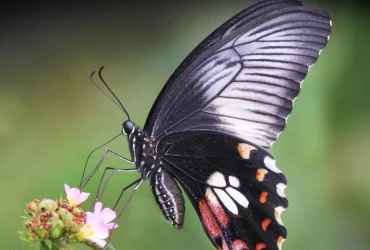 v10i2.262
v10i2.262ISSN: 1800-427X (printed)
eISSN: 1800-427X (online)
DOI:10.47605/tapro.v10i2.262
Submitted date: 20 June 2021
Accepted date: 10 September 2021
Published date: 22 November 2021
Pp. 127, pl. 28.
Ophiophagy by banded krait (Bungarus fasciatus) exposed by a road kill
L. Biakzuala, Malsawmtluanga & H.T. Lalremsanga*
*E-mail: htlrsa@yahoo.co.in
Bungarus fasciatus (Schneider, 1801) is a nocturnal, large bodied krait species, widely distributed throughout South and Southeast Asia. It is found at a variety of habitats with relatively large home ranges. The ophiophagous diet of this venomous snake comprises a broad spectrum of prey items, even including its congener B. caeruleus. It also preys on skinks, fish, frogs, and eggs of snakes. On 16 June 2021, at 2105 h, a fresh road-kill of an adult male B. fasciatus (total length 1.46 m) was observed on a newly constructed tarmac road (width of road ~6 m) at New Khawlek (23°19'16.00"N, 92°38'36.95"E; alt. 715 m a.s.l.), Lunglei District, Mizoram, India. It seems the krait remained vulnerably exposed on the motorway while consuming a redtail pit-viper, Trimeresurus erythrurus (Cantor, 1839) (total length 48.8 cm), and was fatally run over while busy swallowing more than half of the length of its prey, most probably a few minutes prior to our arrival at the site.
Section Editor: Gernot Vogel
eISSN: 1800-427X (online)
DOI:10.47605/tapro.v10i2.262
Submitted date: 20 June 2021
Accepted date: 10 September 2021
Published date: 22 November 2021
Pp. 127, pl. 28.
Ophiophagy by banded krait (Bungarus fasciatus) exposed by a road kill
L. Biakzuala, Malsawmtluanga & H.T. Lalremsanga*
*E-mail: htlrsa@yahoo.co.in
Bungarus fasciatus (Schneider, 1801) is a nocturnal, large bodied krait species, widely distributed throughout South and Southeast Asia. It is found at a variety of habitats with relatively large home ranges. The ophiophagous diet of this venomous snake comprises a broad spectrum of prey items, even including its congener B. caeruleus. It also preys on skinks, fish, frogs, and eggs of snakes. On 16 June 2021, at 2105 h, a fresh road-kill of an adult male B. fasciatus (total length 1.46 m) was observed on a newly constructed tarmac road (width of road ~6 m) at New Khawlek (23°19'16.00"N, 92°38'36.95"E; alt. 715 m a.s.l.), Lunglei District, Mizoram, India. It seems the krait remained vulnerably exposed on the motorway while consuming a redtail pit-viper, Trimeresurus erythrurus (Cantor, 1839) (total length 48.8 cm), and was fatally run over while busy swallowing more than half of the length of its prey, most probably a few minutes prior to our arrival at the site.
Section Editor: Gernot Vogel
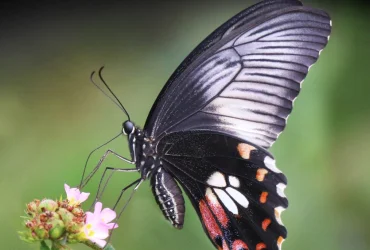 v10i2.261
v10i2.261ISSN: 1800-427X (printed)
eISSN: 1800-427X (online)
DOI:10.47605/tapro.v10i2.261
Submitted date: 8 June 2021
Accepted date: 26 October 2021
Published date: 22 November 2021
Pp. 126
An unusual body colouration of Ceylon roughside snake (Aspidura ceylonensis)
D. Kandambi, N. Abeyrathna, D.S. De Silva & S. Karunarathna*
*E-mail: suranjan.karu@gmail.com
The small sized, non-venomous, and fossorial colubrid snake genus Aspidura Wagler, 1830 is endemic to Sri Lanka. Aspidura ceylonensis (Günther, 1858) is rare and restricted to mid-elevation to montane and sub-montane forests at elevation of 500–1300 m a.s.l. in the Central Highlands and the Knuckles massif. It is found in cool and well-shaded forest areas, with thick moist leaflitter, woody debris, and loose soil. The usual adult body coloration on dorsum is dark reddish or dark orange, rarely yellowish, with a continuous black vertebral line and two rows of dorsolateral black spots along the body.
Section Editor: Thasun Amarasinghe
eISSN: 1800-427X (online)
DOI:10.47605/tapro.v10i2.261
Submitted date: 8 June 2021
Accepted date: 26 October 2021
Published date: 22 November 2021
Pp. 126
An unusual body colouration of Ceylon roughside snake (Aspidura ceylonensis)
D. Kandambi, N. Abeyrathna, D.S. De Silva & S. Karunarathna*
*E-mail: suranjan.karu@gmail.com
The small sized, non-venomous, and fossorial colubrid snake genus Aspidura Wagler, 1830 is endemic to Sri Lanka. Aspidura ceylonensis (Günther, 1858) is rare and restricted to mid-elevation to montane and sub-montane forests at elevation of 500–1300 m a.s.l. in the Central Highlands and the Knuckles massif. It is found in cool and well-shaded forest areas, with thick moist leaflitter, woody debris, and loose soil. The usual adult body coloration on dorsum is dark reddish or dark orange, rarely yellowish, with a continuous black vertebral line and two rows of dorsolateral black spots along the body.
Section Editor: Thasun Amarasinghe
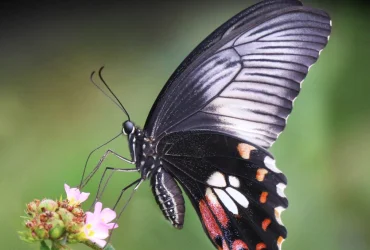 v10i2.260
v10i2.260ISSN: 1800-427X (printed)
eISSN: 1800-427X (online)
DOI:10.47605/tapro.v10i2.260
Submitted date: 5 August 2021
Accepted date: 9 September 2021
Published date: 22 November 2021
Pp. 124–125, pl. 27.
First report of the cuckoo wasp Chrysidea falsa (Hymenoptera) from India
P.G. Aswathi & C. Bijoy*
*E-mail: drbijoyc@gmail.com
Only two species of Chrysidea Bischoff, 1913 have been reported from India: C. furiosa (Cameron, 1897) from West Bengal and C. pumila (Klug, 1845) from Maharashtra. Here, we report the first record of a third species, C. falsa Rosa & Xu, 2015 from India, previously recorded only from China, Malaysia, and the Philippines, and thereby extending the known range of this species. We randomly collected chrysidids from Kasaragod and Calicut Districts in Kerala, which lies in the south-western part of India. Six specimens of C. falsa were collected using sweep nets. Five of them were from two sacred groves in Kasaragod District, Edayilakkad Kavu and Koyithatta Sree Dharma Shastha Kavu. One specimen was collected at Vadakara, Calicut District. The specimens from Kasaragod and Vadakara were found in small rock crevices and on the brick walls of an old abandoned house respectively.
Section Editor: Michael S. Engel
eISSN: 1800-427X (online)
DOI:10.47605/tapro.v10i2.260
Submitted date: 5 August 2021
Accepted date: 9 September 2021
Published date: 22 November 2021
Pp. 124–125, pl. 27.
First report of the cuckoo wasp Chrysidea falsa (Hymenoptera) from India
P.G. Aswathi & C. Bijoy*
*E-mail: drbijoyc@gmail.com
Only two species of Chrysidea Bischoff, 1913 have been reported from India: C. furiosa (Cameron, 1897) from West Bengal and C. pumila (Klug, 1845) from Maharashtra. Here, we report the first record of a third species, C. falsa Rosa & Xu, 2015 from India, previously recorded only from China, Malaysia, and the Philippines, and thereby extending the known range of this species. We randomly collected chrysidids from Kasaragod and Calicut Districts in Kerala, which lies in the south-western part of India. Six specimens of C. falsa were collected using sweep nets. Five of them were from two sacred groves in Kasaragod District, Edayilakkad Kavu and Koyithatta Sree Dharma Shastha Kavu. One specimen was collected at Vadakara, Calicut District. The specimens from Kasaragod and Vadakara were found in small rock crevices and on the brick walls of an old abandoned house respectively.
Section Editor: Michael S. Engel
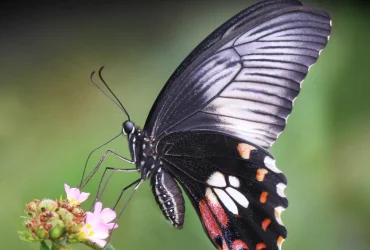 v10i2.259
v10i2.259ISSN: 1800-427X (printed)
eISSN: 1800-427X (online)
DOI:10.47605/tapro.v10i2.259
Submitted date: 9 May 2021
Accepted date: 7 November 2021
Published date: 22 November 2021
Pp. 123, pl. 26.
Slate-red tarantula (Poecilotheria rufilata) in the Western Ghats, India
K. Sunil Jose*
*E-mail: sunil.jose@devamatha.ac.in
The Slate-red tree spider (or tarantula), Poecilotheria rufilata Pocock, 1899 is an extremely rare, endemic, little known tarantula described based on a female specimen from Thiruvananthapuram Kerala, India. This arboreal tree spider is mostly found in dead red pine, jack fruit, and white pine trees and recorded from Agasthyamala Biosphere Reserve, Peppara Dam, Kallar, and Ponmudi areas between 900–1200 m elevations in Kerala. It is morphologically similar to P. ornata Pocock, 1899, which is distributed in Sri Lanka.
Section Editor: Zeeshan A. Mirza
eISSN: 1800-427X (online)
DOI:10.47605/tapro.v10i2.259
Submitted date: 9 May 2021
Accepted date: 7 November 2021
Published date: 22 November 2021
Pp. 123, pl. 26.
Slate-red tarantula (Poecilotheria rufilata) in the Western Ghats, India
K. Sunil Jose*
*E-mail: sunil.jose@devamatha.ac.in
The Slate-red tree spider (or tarantula), Poecilotheria rufilata Pocock, 1899 is an extremely rare, endemic, little known tarantula described based on a female specimen from Thiruvananthapuram Kerala, India. This arboreal tree spider is mostly found in dead red pine, jack fruit, and white pine trees and recorded from Agasthyamala Biosphere Reserve, Peppara Dam, Kallar, and Ponmudi areas between 900–1200 m elevations in Kerala. It is morphologically similar to P. ornata Pocock, 1899, which is distributed in Sri Lanka.
Section Editor: Zeeshan A. Mirza
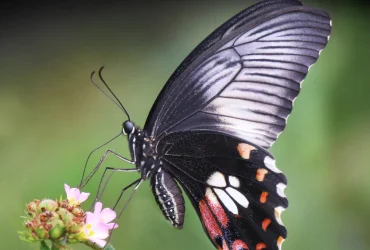 v10i2.258
v10i2.258ISSN: 1800-427X (printed)
eISSN: 1800-427X (online)
DOI:10.47605/tapro.v10i2.258
Submitted date: 7 June 2021
Accepted date: 17 September 2021
Published date: 22 November 2021
Pp. 121–122
A freshwater crab (Barytelphusa sp.) feeding on a catfish (Pterocryptis sp.)
Y. Kalki*
*E-mail: yatin.kalki@gmail.com
The freshwater crab, Barytelphusa cunicularis (Westwood, 1836), is a common and widespread crustacean species inhabiting freshwater streams throughout India except the northeast. It is an omnivore that feeds on small crustaceans, gastropods, insects and aquatic vegetation. This species is commonly collected as a food commodity and is also often reared in captivity for the same purpose. In captivity, these crabs seem to prefer animal-based food and are generally fed about 10% of their total biomass in prawn and rice flakes daily. Observations of B. cunicularis feeding in nature are scant in the literature, and to the best of my knowledge there have not been any reports of the species feeding on fish. Herein I report the first observation of B. cunicularis feeding on a Malabar silurus, Pterocryptis wynaadensis, a type of catfish.
Section Editor: Lee Harding
eISSN: 1800-427X (online)
DOI:10.47605/tapro.v10i2.258
Submitted date: 7 June 2021
Accepted date: 17 September 2021
Published date: 22 November 2021
Pp. 121–122
A freshwater crab (Barytelphusa sp.) feeding on a catfish (Pterocryptis sp.)
Y. Kalki*
*E-mail: yatin.kalki@gmail.com
The freshwater crab, Barytelphusa cunicularis (Westwood, 1836), is a common and widespread crustacean species inhabiting freshwater streams throughout India except the northeast. It is an omnivore that feeds on small crustaceans, gastropods, insects and aquatic vegetation. This species is commonly collected as a food commodity and is also often reared in captivity for the same purpose. In captivity, these crabs seem to prefer animal-based food and are generally fed about 10% of their total biomass in prawn and rice flakes daily. Observations of B. cunicularis feeding in nature are scant in the literature, and to the best of my knowledge there have not been any reports of the species feeding on fish. Herein I report the first observation of B. cunicularis feeding on a Malabar silurus, Pterocryptis wynaadensis, a type of catfish.
Section Editor: Lee Harding
Hubungi Kami
The ultimate aim of the journal is to provide an effective medium for communication of the latest and best scientific information.
Copyright © 2020 Taprobanica. All Rights Reserved
Jasa Pembuatan Website by IKT




